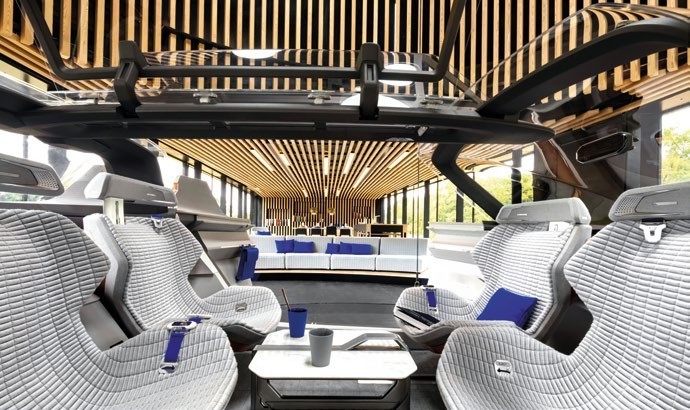This writer dreams of a utopia where there are no boundaries between where we live and what we drive.


THE integration of the house and car is a concept that intrigues me, partly because it marries what I studied with what I love, but it also has something to do with the Steven Spielberg movie, Minority Report.
Many of us will recall the scene where Tom Cruise’s Lexus 2054 concept car simply docks into the building facade and becomes part of his apartment.
While it may seem like something from the future, it is actually not far-fetched because the MAG-LEV technology that enables such a scenario has already been available for years, although it has not seen widespread adoption.
And such a technology can easily be harnessed in making the transition from horizontal to vertical surfaces, such as building facades.
Some car manufacturers are also moving in the same direction. Honda’s IeMobi is envisioned to not only attach itself to a home on the ground, but also possibly climb walls and click itself into an apartment.
Renault’s Symbioz concept is conceived as an extension of our living space. Mr. Stephane Janin, Director of Concept Cars at Groupe Renault refers to the Symbioz as a “living room on wheels”.
Its design was inspired by contemporary architecture and its construction based on architectural principles. The cabin configurations and materials used are also closely related to home interiors.
Its modular concept allows it to become an extension of the home.
Stepping into your car is essentially like crossing the threshold from one room into another.
“If people are commuting in a vehicle which is a seamless extension of their home, there will be no boundaries anymore between both of them,” says Mr. Janin.
Apart from being a spatial part of the home, these cars can also integrate with the home in other aspects. They can be charged up by the home and excess capacity can go back to the grid.
They can be seamlessly interfaced with smart home features, such as being a part of the home security system for example.
So, when your car is parked at home, it is no longer just sitting idle, which means putting the resource to better use.
And speaking of better use of resources, cars docked into building exteriors will negate the need for surface or multistorey carparks and free up land that can be put to better use.
Taking it one step further, by “plugging” into homes, these cars can be utilised as a sort of floating floor area, which may perhaps reduce the permanent footprints of homes.
Apart from alleviating demands on land, there are also potential benefits for an aging population. With these cars attached to our homes, elderly with mobility issues can move effortlessly from home to car, which can then take them wherever they need to go.
The Hyundai Mobility Vision concept has a facet that explores the integration of health and mobility, whereby the vehicle’s electronics can be switched to a health mode that can then run diagnostics on vital health indicators.
However, before we (or rather, I) get carried away, experts point out that these run counter to carlite policies and a more realistic near-future is one involving autonomous vehicles and vehicles-ondemand, according to
Professor Heng Chye Kiang from the School of Design and Environment, National University of Singapore.
Associate Professor Walter Edgar Theseira, Head of Master of Management (Urban Transportation) at the School of Business, Singapore University of Social Sciences, highlights that “in dense cities like Singapore, public policy in the future is likely to further discourage personally-owned transport simply because of space constraints”.
Mass transportation systems are the way forward. He points out that you need about two-dozen cars to replace the carrying capacity of one bus, and about 300 cars to replace one MRT train.
“So, you can see how inefficient personal vehicle transport is, which is why planning a city around it is very challenging and not at all future-ready,” he emphasises.
Which brings me back to reality. I guess what’s from the movies should stay in the movies.

CARS DOCKED INTO BUILDING EXTERIORS WILL NEGATE THE NEED FOR CARPARKS AND FREE UP LAND THAT CAN BE PUT TO BETTER USE.























